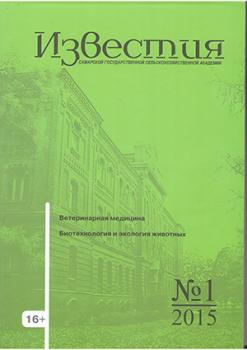p.g.t. Ust'-Kinel'skiy, Samara, Russian Federation
Samara, Russian Federation
The purpose of the research is comparative evaluation of drugs for pre-treatment of seeds as regulators of phytosanitary state of agrocenosis of spring wheat yield on different zoned varieties. The damage agrocnosises spring wheat in both years of observation all studied phytophages was below the EPV. On average data best to reduce crop damage striped flea beetles appeared variant NV_101 seed treatment less effective – preparations succinic acid, Appin Extra and Zircon. Among the varieties studied agrocnosises longer damaged by striped flea grade Kinelsky Otrada, less susceptible due to pre-sowing seed treatments were Kinelsky Niva and Kinelsky Anniversary. Chinch actively feeding during the growing during the 2015 compared with 2014, but to reveal the regularities of pre-treatment of seeds of spring wheat on the central leaf desiccation failed when feeding chinch. Presowing treatment of seed of spring wheat had a positive impact on reducing the number of sprout damage on the fly all the studied drugs, indirect impact on the increased resistance to pests damage plants provided growth regulators. Chemical disinfectants – Maxim and Vitaros – consistently reduced the infestation of fungi colonies in two years of investigations. But it should be noted that the growth regulators Appin Extra and Immunotsitofit also significantly reduced the number of agents of root rot, especially on small infected grain. Chemical disinfectants steadily reduced the infestation of grain only at grade Kinelsky Anniversary, other varieties disinfectants showed better performance only on heavily infected grain. The use of growth regulators in the pre-processing of spring wheat variety Kinelsky Anniversary, affected, of course, is positive on the phytosanitary state of the spring wheat crop, that resulting in higher yields.
wheat, treatment, disinfectants, rot, pests
1. Vlasenko, N. G. Promising bioactive substances on spring wheat // Protection and quarantine of plants. - 2013. - №4. - P. 36-37.
2. Eskov, I. D. Optimizing the timing of chemical treatments allowing for the formation of the insect fauna of spring wheat in the Saratov Region // Agricultural Research magazine. - 2013. - № 4. - P. 18-22.
3. Kirsanova, E. V. On the prospects of pre-processing of spring wheat seed growth regulators in the Orel region // Bulletin OrelSAU. - 2008. - №3. - P. 21-23.
4. Pertseva, E. V. Efficiency preseeding seed treatment in the protection of spring wheat // Innovative development of modern science : collection of articles of the International scientific and practical conference. - 2015. - P. 49-52.
5. Romanov, A. V. Ecological and physiological aspects of preseeding processing of seeds of spring wheat phytoregulators and micronutrients. - Ulyanovsk, 2011. - 159 p.
6. Sokolova, A. I. Effect of pre-sowing seed treatment methods for resistance to pathogens of spring wheat root rot // Bulletin of the Samara State Agricultural Academy. - 2010. - №4. - P. 45-49.
7. Starichkova, N. I. The effects of pre-treatment of seeds of spring wheat / N. I. Starichkova, E. S. Sorokovikova, M. A. Kushneruk // Bulletin of the Botanical Garden of the Saratov State University. - 2014. - №12. - P. 58-63.





